 |
Fine Wine Estates from Austria
|
Wine Estates
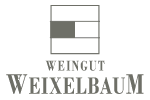
Strass in the Kamptal, a pioneering winemaking region, has for many years made a significant contribution to the Austrian wine industry in terms of high quality wines. Strass is home to Austrian's oldest winemaking establishments among others the Weixelbaum winery which is a family business since 1770. Heinrich Weixelbaum pro-duces superb results from some of Strass's best grapes. He is the winemaker of Weixelbaum Winery and is constantly looking for consistently excellent wines. His life is his family and winery and his guiding principle is:
"We all have an interest in the progress of the vintage and have two simple aims........to make wines we love to drink ourselves and to see others enjoying them."
Wine region: Kamptal / Austria
Its name originates from the Kamp River. In the middle of the Kamptal is Austria's largest wine town named Langenlois. Next to it is the well-known wine village Strass. A wine growing highlight in the area is the Zöbinger Heiligenstein and the Strasser Gaisberg. Both mountains are now the best sites for Riesling and Grüner Veltliner. Plentiful clay, loess and primary rock soils help create a distinctive Grüner Veltliner. Here its taste is peppery and has an excellent ageing potential. The pronounced acidity, a characteristic of the Grüner Veltliner as well as the Riesling, adds to this potential.
Sites:
Gaisberg, Wechselberg, Hasel, Gautscher, Strasser Sandgrube, Brunngasse, Eichberg
Hectares/ acres: 17/ 42
Speciality:
Grüner Veltliner Barrique - matured in oak barrels
Grape Varieties:
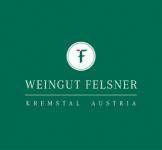
Manfred Felsner cultivates with the help of his family 38 acres of best vineyard sites in Gedersdorf and Rohrendorf (wine growing area Kremstal, one of the most famous wine growing districts in Austria). Since the young winemaker became the leader of the estate in 1990 he has been striving to produce single vineyard wines clearly expressive of their variety and of their Kremstal origin at an internationally competitive level. His viticultural guideline is: „Little is more". He is an uncompromising representative of the terroir principle; canopy management principle and selective multiple pass picking of the grapes. All grapes are hand-picked. In the cellar he combines modern technology with traditional wisdom in order to preserve the high quality of the grapes without loss of aroma for each bottle of Felsner wine. The results are fruity, elegant, well-aging wines. He also gives absolute priority to environmentally friendly methods of viticulture. Manfred Felsner has been rapidly gaining a reputation for growing and creating outstanding wines. His efforts are recognized by awards received at national and international wine tastings and competitions.
The Felsner Grüner Veltliner thrives on well-exposed terraced vineyards with either ancient loess or calcareous conglomerate soils. The mild Pannonian influence from the east and the cool winds from the Waldviertel lend the wines spice and finesse. Each Grüner Veltliner, from the elegant Moosburgerin to the full-bodied Vordernberg to the mineralic Kremser Gebling and the complex Alte Reben, has its very own personality.
The vintner, Manfred Felsner
Tasting with me you are instantly aware that I like wine, like making it, like explaining it, like thinking about it and I am entirely fond of it. I want my wines to give pleasure and to stimulate sensuality and the zest for living.
The philosophy
The love for our land and for our natural environment is what inspires me to passionately create great wines. I believe that it is my responsibility to take that fruit and get it into the bottles as the most natural and purest expression of that specific vineyard, of the grape varietal and of the vintage.
In order to reach this I do not use international varietals, but instead indigenous varietals. Only varietals like Grüner Veltliner, Riesling, Neuburger, St. Laurent, etc. have the best qualification to grow every year grapes of highest quality, because they have perfectly adjusted to the regional microclimate and soil for several hundred years, like no other varietal.
This principle helps me create wines that are internationally recognized as top quality.
The vineyards, the sites
I consider myself very lucky to own vineyards of which many were already planted by my grandfather.
The greatest treasure of Felsner winery is its high stand of old vineyards. 50 % of our Grüner Veltliner vines are over 30 years old, some even over 45 years. If one is satisfied with crop on a reduced scale, old vines will be interesting. The small, loose-berried grapes are less prone to mould, reach faster the desired sugar content and provide much more extract. Old vines reach much deeper layers of soil, where additional trace elements and nutrients can be absorbed. These give the wine a distinctive taste.
In order to preserve old rare varietal clones, we tend some ancient vines to be used for new grafts. In our appellation we have good years and we have great years. It gives me the freedom to decide, nothing holds me back from expressing myself.
The wine cellar
The natural centrepiece is our 500 years old natural cellar, deep down at the bottom of a loess terrace, covered with 10 m of loess layer. Constant cool temperature (10° Celsius) and humidity guarantee perfect conditions for the development and ageing of the wines in stainless steel tanks as well as acacia and oak barrels.
We grant our wine a long phase of fermentation, in which the young wine remains closely bound to the yeast. Only after at least 4 months of maturation it is filled into bottles.
The Vinification
All viticulture is ecological. Natural fertilizers, no herbicides or pesticides, composting with the skins. But we are not organic, as fungicides are used. We'll green-harvest if need be.
All harvesting is selective, with 2 or 3 passes through the vineyards, exclusively by hand. The white grapes are whole-cluster pressed. All pressing is pneumatic. Cultured yeast is used to ferment in temperature-controlled tanks. We don't chaptalize and our musts settle by gravity. After fermentation the musts are racked twice, never fined.

The Gager family winery has been among the top producers in Austria since the mid-1980s. The winery was initially a source of second income for Josef and Paula Gager, but the success of their high-quality wines allowed them to make their hobby their full-time occupation in 1999. Today the Estate is a family-run business. It is situated in Deutschkreutz, a very famous wine-growing village in the middle of Austria's easternmost province called Burgenland. In this charming hilly region deep loam soil is mainly planted with a great variety of red wine grapes. The red wine variety Blaufränkisch which is typical for this region dominates. Therefore this area is also called "Blaufränkischland".
The Team:
Josef Gager - winemaker and sale
Paula Gager - sale and administration
Horst Gager - winemaker, marketing and sale
Ulli Gager - administration and foreign relations
Daniela and Andreas Dostal - sale and administration
The Gager Estate cultivates about 35 hectares of vineyards. The main attention is on red wines which are produced from the following grape varieties: Zweigelt, Blaufränkisch, Merlot, Cabernet Sauvignon, Cabernet Franc, Syrah, Roesler and Tannat. At the moment 180.000 bottles a year are produced.
The use of modern winemaking methods and of the newest technology together with a great love for making wine allows the Gager family to vinify great wines every year.
In 2006 a new winery was built in the center of Deutschkreutz, which sets new standards in the region. Next to rooms for tastings, seminars, and sales, there is a new impressive barrique celler and offices. There are also six comfortable guest rooms available for visitors
The Wines
Q2 2006
An extraordinary and fascinating dark colour invites you to taste this high-quality wine with the special taste of the combination of Zweigelt and Roesler. An intensive berry nose (ripe wild raspberries and cherries) and a well-balanced sweetness provide an interesting pleasure when drinking this wine. Enjoyable finish. Deep ruby violet in colour.
BLAUFRÄNKISCH VITIKULT 2006
Dark berry fruit (sour cherry and blackberry), roasted aroma - the main characteristics of this wine. Elegant and well defined on the palate. Soft tannins with balanced woody notes provide a powerful and long finish.
QUATTRO 2005
Cabernet Sauvignon, Blaufränkisch, Zweigelt and Merlot - this quartet provides some Italian touch! The powerful dark colour together with the scent of blackberries, elder-berries and cherries has got some magic. An abundance of fruit, a soft tannin structure and gentle roasted aromas on the palate leave a long aftertaste.
TYCOON 2005
As the name suggests this is a big style wine. Cabernet Sauvignon, Blaufränkisch and Tannat - these three grape varieties have been blended and the result is a very special wine. The smell of blackberries, wild raspberries and dark chocolate is inviting. The palate has balance, the tannin structure is in harmony with the fruit.
Impressive power and lingering finish.
JUWEL 2005
Blaufränkisch. A dark core, a rich complex cassis nose with a fine balance of roasted aromas and plain chocolate and tobacco. Full bodied tannin structure with ripe fruit. A wine with much to say on the long pleasing finish!
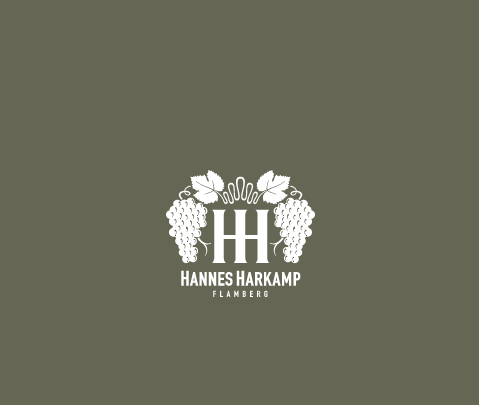
Hannes and Petra Harkamp are the kind of people you immediately feel at home with. They could easily become your favorite neighbors or best friends. The Harkamps possess a joy for life and down-to-earth attitude that made me simply want to hang out with them for the afternoon. Had the wine not been stellar, it would have been incidental. However, Harkamp wines are stellar, and they quickly became the focus of my attention after our playful photo session atop one of the Harkamps steeply sloped vineyards.
I'm aware this sounds trite, but I got the feeling that Harkamp wine is honestly made and hiding nothing. Wild yeasts are used; along with touches of malolactic fermentation. In fact when talking about his winemaking philosophy, Hannes becomes earnest and explains his credo: My wine is the mirror of my soul. This is printed on every cork. He refers to himself as Weinbauer (wine farmer) vs. Winzer (winemaker). This projects an honesty to his artistry, and until recently, all harvesting, planting and maintenance was done by hand.
The Harkamp "Style" (Steil in German) wines are focused on fruit. These wines are aged in large neutral wooden casks. The result is indeed a wine with fruit, but not one that is overly fruity. Harkamp's Weissburgunder (AKA Pinot Blanc) Steil is replete with scents of apple and pear, along with very subtle notes of caramel and cream. The wine offers a smooth texture along with, what I am coming to discover, south Styria's reliable acidity.
The Sauvignon Blanc "Oberburgstall" is made from vines that grow right outside Harkamp's tasting room. It is, as Hannes describes it, a "double D" wine - ripe, rich and viscous in the mouth. This wine also possesses a distinct white pepper quality, which I have not encountered in other Sauvignon Blancs. A unique wine, indeed.
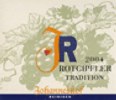
Four generations of members of the Reinisch family have been growing wine in and around Tattendorf. The new winery "Im Weingarten" in the middle of large vineyards north-east of Tattendorf was established in 1995. The permeable and lime soil of the vineyards of Johanneshof Reinisch provides the crop with minerals and a high level of aroma. The regional terroir round Tattendorf regularly lets the grapes ripen to their full extent. When autumn reaches its climax, noticeable differences in moistness and temperature between day and night cause botrytis cinerea - thus allowing vinification of a most outstanding quality. Wines of Johanneshof Reinisch are exceedingly stored in small barrels of oak (barriques).
The Johanneshof
Nestled at the foot of the Eastern Alps, twenty miles south of Vienna, the newly built chateau of fourth generation, family owned Johanneshof Reinisch Winery sits squarely at the crossroads between Tradition and Innovation in Austrian Wine production.
The shallow gravel-rich vineyards that surround this one-of-a-kind facility are ideal for red varietals which, unlike most Austrian wineries, comprise 75% of the total production - Pinot Noir and the indigenous St. Laurent are at the heart of the unique Reinisch identity.
The internationally acclaimed white and dessert wines are grown in low-lying blocks rich in silt and loam.
The area surrounding Johanneshof Reinisch has a long tradition of wine growing, dating back to the Romans who cultivated vines along what they called the "Thermal Line" - what is now the viticultural appellation Thermenregion.
JR properties are farmed to enhance living conditions for the vines and all creatures that live on then grounds.
The Reinisch philosophy: "To produce wines with soul, those chronicle the impact of Nature on each vintage, and preserve the role of wine in the region".
Austrian Wine Press
A La Carte 2007
Gault Millau 2007
Falstaff Wine Guide 2006/2007
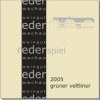
The wine-grower family Eder cultivates vineyard acreage of 12 hectare in Mautern which is located in the famous Austrian wine region Wachau. The wine-growing estate Eder produces its Federspiel and Smaragd wines on three hectares. They are made from the vineyards Süssenberg, Silberbichl and Raubern - which are the most renowned locations in Mautern (the first documented wine growing community in Austria).
For the most part the wine is produced according to the branded quality categories Steinfeder, Federspiel and Smaragd. The annual production accounts for 20.000 bottles.
Our quality assurance is found in the Code of the Wachau which says:
For the Vinea Wachau, wine is a completely natural product, one which represents its area of origin and the distinctions of the area as well. The Codex Wachau is a declaration of dedication to natural wine production and the strictest of controls in the categories of Steinfeder, Federspiel and Smaragd. Absolutely no chemical-change processes or taste-altering changes are permitted.
The main types of wine are Grüner Veltliner and Riesling. The types of aromatic wine are Muskat and Traminer which complete our product assortment.
The grapes for our Smaragd-wines grow on 40 year old vines.
The harvest is done manually with at least three repetitions per harvest. The Smaragd-harvest takes place rather late in the year - usually in November. The bottling is done not before April or May of the following year.
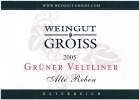
The Winery
The winery GROISS is located in Lower Austria on the eastern border of the Wagram in the wine-growing area Wagram. On sandy and partially very thick loess soil the varieties typically for the region are cultivated.
Our 14 hectares of vineyards are strictly cultivated according to the guidelines of the Integrated Production. The natural cultivation is looking to be in consistence with the nature to harvest grapes of highest quality.
The family business is managed by Herbert GROISS Jun., Karin and his parents Herbert and Luise GROISS. He is second generation vintner of a vibrant and aspiring winery. Herbert GROISS Jun., graduate of HBLVA Klosterneuburg, is responsible for the vinification of the wines. His passion is the classic Grüner Veltliner - classic dry, fruity and spicy.
The Wagram
The Wagram is a terrain elevation originated by sand drifting alongside the Danube River thousands of years ago. With its seceding loess terraces facing south, it offers ideal conditions to the vines. The warm Pannonic climate streams into the Danube area and provides for the ideal ripeness of grapes. At the same time, the nights at the Wagram are cool enough to enable the formation of a delicate fruit aroma, and maintain the typical, racy acidity of the white wines. Grüner Veltliner loves this pure loess soils. Weissburgunder and Pinot Gris favour the soils rich in lime, whereas Riesling grows best on sandy, meagre soils.
Grape Varietals
The white wines range from fruity, dry and light Grüner Veltliner to forceful and dry varieties like Weißburgunder, Chardonnay and Riesling.
Our red wines range from light, drink-animating Blauer Portugieser, the fruity, full-bodied Zweigelt to the forceful, dense and full-bodied Zweigelt and Cabernet Sauvignon.
The Sites
Steinberg
The Steinberg vineyard site is one of the best sites in our region - orientated to southwest. It is situated on one of the highest areas used for wine growing on the Wagram ( 330 m). In the north, immediately next to the site there is a forest, which on the one hand protects the site against the strong winds blowing from the north-west, and which on the other hand brings about a special micro-climate: In spite of the southern exposure a cool wind blows from the forest even during hot summers, which, compared to other sites, results in stronger temperature variations between day and night. As a consequence, the aroma of the grapes intensifies, the wines become more structured and multi-layered.
This deep loess soil with a certain percentage of clay is perfectly suited for our Grüner Veltliner, Zweigelt and Cabernet Sauvignon vines.
Sätzen
A southern vineyard site in front of the site Steinberg. The soil consists of deep sandy loess with higher amounts of lime. So the soil is easier warmed up and the grapes can ripe earlier. This site is well suited for vines ranging from especially Grüner Veltliner, Weissburgunder to Riesling.
|
||||||||||||||||||||||||||||||||||||||||||||||||||||||||||||||||||||||||||||||||||||||||||||||||||||||||||||||||||||||||||||||||||||||||||||||||||||||||||||||||||||||||||||||||||||||||||||||||||||||||||||||||||||||||
AustrianWineEstates Site Search
|